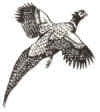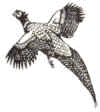|
|
In the BeginningRaising a puppy can be fun! It should be fun! A little bit of your time spent training your new pet now will prevent him or her from turning into a monster that you'll regret having met! The importance of home training, puppy socialization, and obedience classes for pet and owner cannot be overemphasized. This is especially true for large dogs and those with dominant personalities. Some breeds have tendencies towards "dominant" personalities, not necessarily the same thing as "aggressive" personalities but uncontrolled dominance can lead to aggression! It is critical that a puppy learns to be subordinate to its owner just as it would to a pack leader. All too often the owner relinquishes the right to this control. Once the dog establishes dominance over the owner this behavior becomes difficult to reverse. Stable learning begins in puppies at approximately 8 weeks of age. Puppies have a short attention span so lessons should be kept to just a few minutes per session. Non-aggressive training for puppies basically means do not let the puppy do anything that would be unacceptable if it were an adult. Puppies bite in play. This is when a dog learns how much jaw pressure is necessary to create pain. Many owners endure bites by a pup's sharp teeth because "it is cute", even though it is painful. When a puppy bites a littermate a yelp is elicited, play ceases and biting stops or the bites become softer. Do not let your puppy chew or "mouth" your hand. When he bites "shriek" or "yelp" sharply and loudly. It must be loud enough to startle him! Do not pull your hand away. Let the puppy release the bite. If you suddenly pull away you encourage him to playfully lea towards you. Teach children to do the same when playing with the puppy, but remember that young children should always be supervised and you must intercede with the distraction ("yelp") if play gets too aggressive. Chewing is normal puppy behavior. Give him or her a few chew toys that are okay to gnaw on. If puppy is caught chewing on something that is "off limits" remove the inappropriate item with a gentle but firm "no" and place a chew toy in it's mouth. If you scream at him and pull the item away he may ask himself "What am I doing wrong? Am I lying in the wrong place? Do I smell bad?" Food chew toys include rawhides, pig ears, and the new dental preventative chews. You want something that will last so the puppy remains familiar with it. To successfully train a puppy you should use a correct training method. Forceful training does not help the puppy learn. The biggest motivation for training and reinforcing obedient behavior are food, a favored toy, affection and social attention. How-To The healthiest choice for a reward is the puppy's own dry food, along with praise. Training just prior to the puppy's routine dinner is an excellent time, as puppy's interest in the food will be focused. As the pup gets better at performing the desired behavior, stop giving a food reward for less than exact response, and only reward quick, well performed responses. After the pup has mastered the behavior, only give a treat on a random basis, but always use praise. Come To teach a puppy to come, hold a piece of dry food out to the puppy in your fingers. Say the puppy's name and the command "come". Sit -
many competition dogs are not taught this command
To teach sit, start with the puppy in the standing position. Hold a piece of dry food directly in front of its nose and say the pet's name. Slowly move the food over the pet's head so that its nose points straight up as you do this say "sit". The leverage of the pup's nose in the air should cause the pup to sit. Do not hold the food so far away that it causes the pet to jump up. Crate Training
(Portions of the preceding are from the brochure "Puppy Training" from the Zumbrota Veterinary Clinic in Zumbrota, MN and have been used with permission.) |
|
|
|
|
|
|
|
|
|
|
| E-mail us at - info@windwalkerkennel.com |
"Where Quality Isn't Expensive, It's Priceless"




